According to American Revenue Management Solutions, the market situation in relation to rising prices will be even more challenging. All those operating in the gastronomy industry know it, but some may not know what steps to take to stay in the game. The key to "success" (yes, success in this industry has been redefined) is proper management of costs and prices in your establishment. Three principles have been developed that should guide restaurant owners in making pricing decisions in 2022.
Principle 1: Focus on the Guest's Perspective
With lower consumer purchasing power, introducing a pricing strategy regardless of the consumer is risky. A price increase on the menu may cause guests to stop visiting your establishment regularly or start looking for alternatives. On the other hand, basing pricing decisions on the guest's perspective optimizes the profitability of the business.
When following this principle, consider:
Price sensitivity is the degree to which the price of a product affects consumer purchasing behavior.
Principle 2: Build Confidence in an Uncertain Environment
It's difficult to predict what's to come this year. Almost all fixed costs face inevitable growth, and inflation tests the ability and willingness of consumers to spend money on eating out. In times of uncertainty, a certain goal can be set: to take care of guest traffic in your establishment and maintain an appropriate margin.
To increase the flexibility of your pricing strategy while maintaining best practices, consider the following:
Principle 3: Short-Term Panic, Long-Term Success
Rising labour and commodity costs are the reason for the current crisis. But will a similar situation persist in six months? The answer is: yes and no. Consider the following:
The increase in labour costs is likely to persist. The annual budget should be planned to balance long-term increases in labour costs, taking into account increases already undertaken in previous years. Analyze the increase in COGS (Cost Of Goods Sold). Based on data on the Consumer Price Index (CPI) for goods and services from November 2021, we know that this index for meat, poultry, fish, and eggs increased by 11.9% compared to 2020. Beef prices increased by 20.1%, and pork prices increased by 14.1%.
Summary
In the era of inflation, developing a pricing strategy for your restaurant is crucial. This strategy must not only meet business needs, but also take into account the perspective of the consumer - the restaurant guest.
At BVA, we work in the gastronomy industry to provide our clients with solutions tailored to their needs, including pricing strategies, menu engineering, and restaurant cost management. If you need support in a particular area, contact us today.
